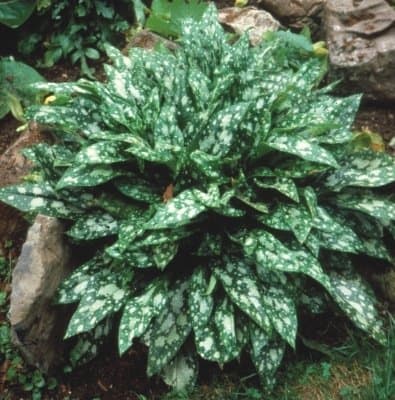My shady pocket garden on the east side of the house (known as the air-conditioner garden, because that’s where the beast lives) has been taken over by great Solomon’s seal (Polygonum biflorum, syn. P. commutatum, Zone 5). The small clump I put there 10 years ago has been travelling underground. To control it, I cut the stems down to the ground after the spring display to let other resident perennials begin their show. That’s not really control, more like avoiding the work of digging out some of the vigorous rhizomes. Solomon’s seal is pretty when flowering and an interesting architectural plant all summer, but I’ve got too much of a good thing.

After reading Stephen Westcott-Gratton’s article about lungworts in the spring issue of Garden Making, I’ve decided to get lots more of these plants with their early flowers and variegated leaves for the air-conditioner bed. I already have Pulmonaria saccharata ‘Mrs. Moon’ (Zone 3) enjoying the bright shade there. Its pink-fading-to-blue flowers and green leaves dotted with silver look pretty all summer, and it blooms for six weeks, much longer than any of the early tulips. I’d like to use lungwort as the signature plant in that bed, and add another six to eight cultivars. In particular, I want to find ‘Majeste’, a lungwort of unknown origin found growing near ‘Mrs. Moon’ in the plant breeder’s bed. ‘Majeste’ is probably related to ‘Mrs. Moon’, and has fully silver leaves with no markings. It’s a bold and striking plant with pink flowers that age to royal blue. Finding silver-leaved plants that grow in light shade is a challenge, and ‘Majeste’ could also perform well in brighter light locations.
Lungwort likes consistently moist soil amended with leaves or garden compost. Although I use small, whole leaves for mulching exposed soil, I’m going to get my old leaf shredder out and make these plants some finely textured leaf mulch. Sometimes the smallest garden beds are the most fun to develop.
Other posts by Judith this week:
Posts by Judith last week:








